HICKAM AIR FORCE BASE, Hawaii (AFNS) —
If you’ve spent time in the Indo-Pacific region, you’ve likely heard the term “Fight Tonight” more than once and for good reason. Pacific Air Forces Airmen are on the forefront of operations in ensuring a free and open Indo-Pacific, and these operations come with a need to be ready, diverse, innovative and lethal.
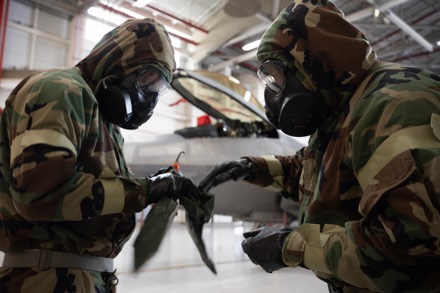
We have been charged with challenging the status quo, operationalizing resourcefulness and adopting concepts and technologies that drive the readiness, resilience and lethality of the force.
One of the most recent advances added to the PACAF portfolio involves the U.S. Air Force Next Generation Aircrew Protection, or NGAP, effort.
Airmen with the 15th Wing and 154th Fighter Squadron on Hickam Air Force Base tested and trained on the F-22 Raptor using the innovative Step-Launch and Recover, or SLR, concept of operation and the critical data provided by the NGAP effort. SLR allows for the aircrew to safely generate sorties in a Chemical, Biological, Radiological, and Nuclear, or CBRN, contaminated environment.
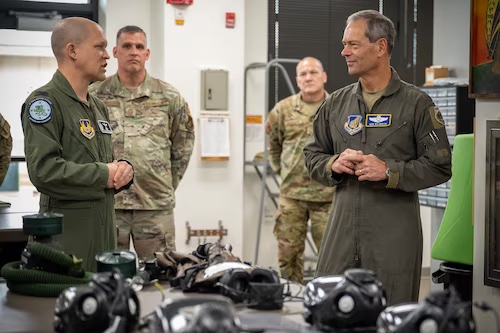
“The ability to confidently operate in less-than-optimal conditions is vital for our aircrew,” said Gen. Ken Wilsbach, PACAF commander. “SLR and NGAP capabilities ensure our ability to fight tonight with an enhanced level of protection for our Airmen who may be operating in a CBRN-threatened environment.”
The current solution for pilots is to use the Aircrew Eye and Respiratory Protection System, which was initially developed during the Gulf War and is not agile enough to allow for scaled protections against current CBRN threats. The legacy mask ensemble risks degradation to aircrew performance and combat effectiveness due to its bulk and impact on dexterity. While this is the current solution for most ejection seat airframes, the F-22 doesn’t have an effective CBRN mask—making it even more essential to innovate to find an adaptive solution for our warfighters.
This new process uses the modified M-50 ground crew mask—the same one that’s used with Mission Oriented Protective Posture, or MOPP, gear—and two-layer nitrile gloves worn under the standard flight glove and allows aircrew to safely execute take-off and landing procedures in a chemically contested environment without the thermal burden and loss of dexterity.

“This method of CBRN protection provided me not only the dexterity but also the visibility I needed while in the cockpit,” said Capt. Alex Moss, 19th Fighter Squadron F-22 pilot.
The concept of SLR was originally generated by a series of events set in motion during the North Korea pressure campaign in 2018.
“The ability to use an innovative science-informed concept like SLR immediately restored combat capability options in a CBRN contested environment to our Indo-Pacific Command commanders,” said Senior Master Sgt. Ryan Rios, PACAF Command Aircrew Flight Equipment lead. “This is the type of flexibility that provides game-changing combat power and removes options from our near-peer adversaries to degrade our capabilities.”
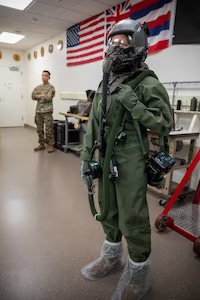
Based on a need to unencumber the pilot, a team of cross functional experts from Headquarters Air Force A10, PACAF, Air Force Research Laboratory, Air Combat Command, the Air Force CBRN Defense Systems Branch, the Joint Program Executive Office for CBRN Defense, and numerous other organizations began looking at the ability of the on-aircraft environmental control system—or air conditioner—to remove and purge chemical vapor contamination from the cockpit
“The assumption was that if a chemical vapor threat could be purged and mitigated, the pilot could fly with a decreased level of protection,” said Col. Paul Hendrickson, Air Force CBRN Defense Systems Branch Materiel leader. “The initial findings were positive, and the NGAP effort was launched to characterize the environments our pilots and aircrew could face in order to allow for the creation of risk-informed operational techniques and new materiel solutions.
To date, the joint team has tested F-15, F-16, F-22, A-10 and C-130 aircraft and provided the data to commanders to allow them to make risk-based decisions based on the threat, ultimately transitioning the aircrew to the aircraft without additional contamination.
The team at Hickam AFB tested this process for the F-22. The pilot donned protective gear and the M-50 mask, went to the aircraft, purged the simulated contaminants before removing the mask, and simulated conducting a mission before reversing the process and going through an expedited decontamination line
“Using science and technology to ensure we are developing the right materiel solutions for the future fight is a game-changing mentality,” said Steve Singleton, Air Force CBRN Defense Systems Branch NGAP program manager. “It gives us huge flexibility as materiel developers to develop pertinent solutions at the speed of relevance to protect the warfighter and support mission effectiveness.”
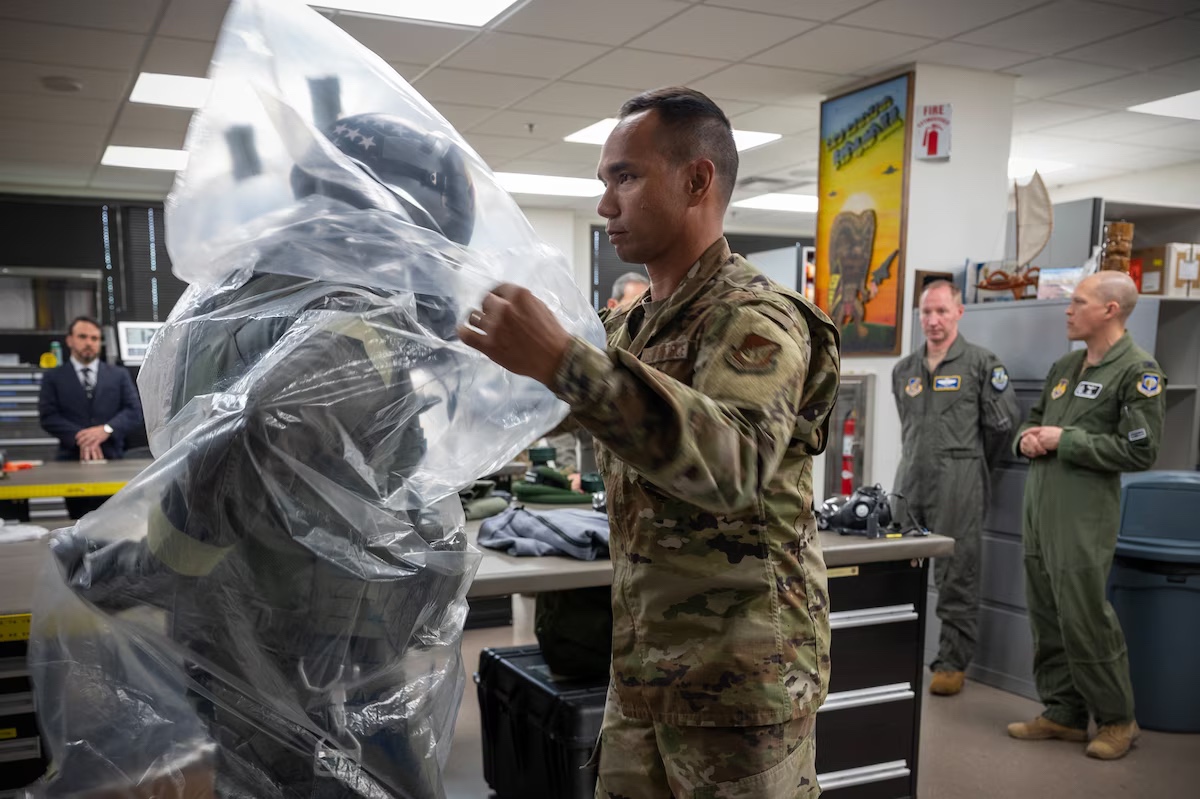
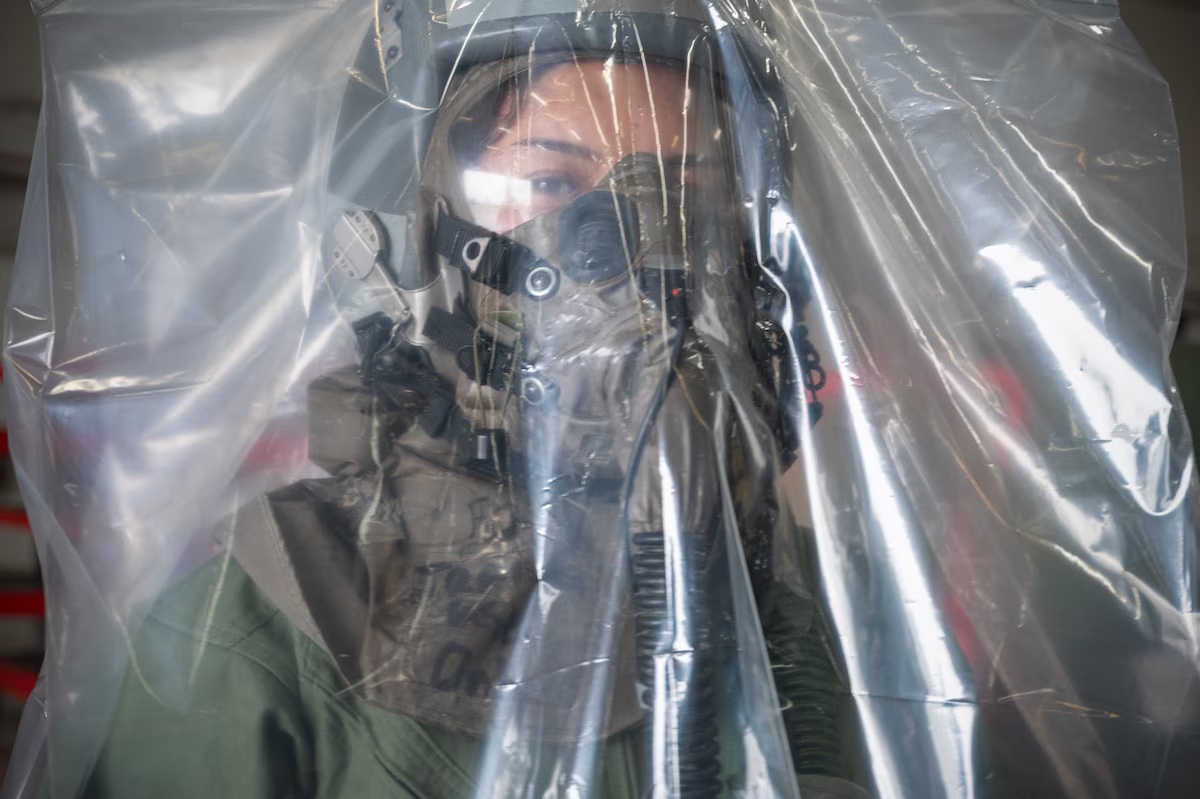
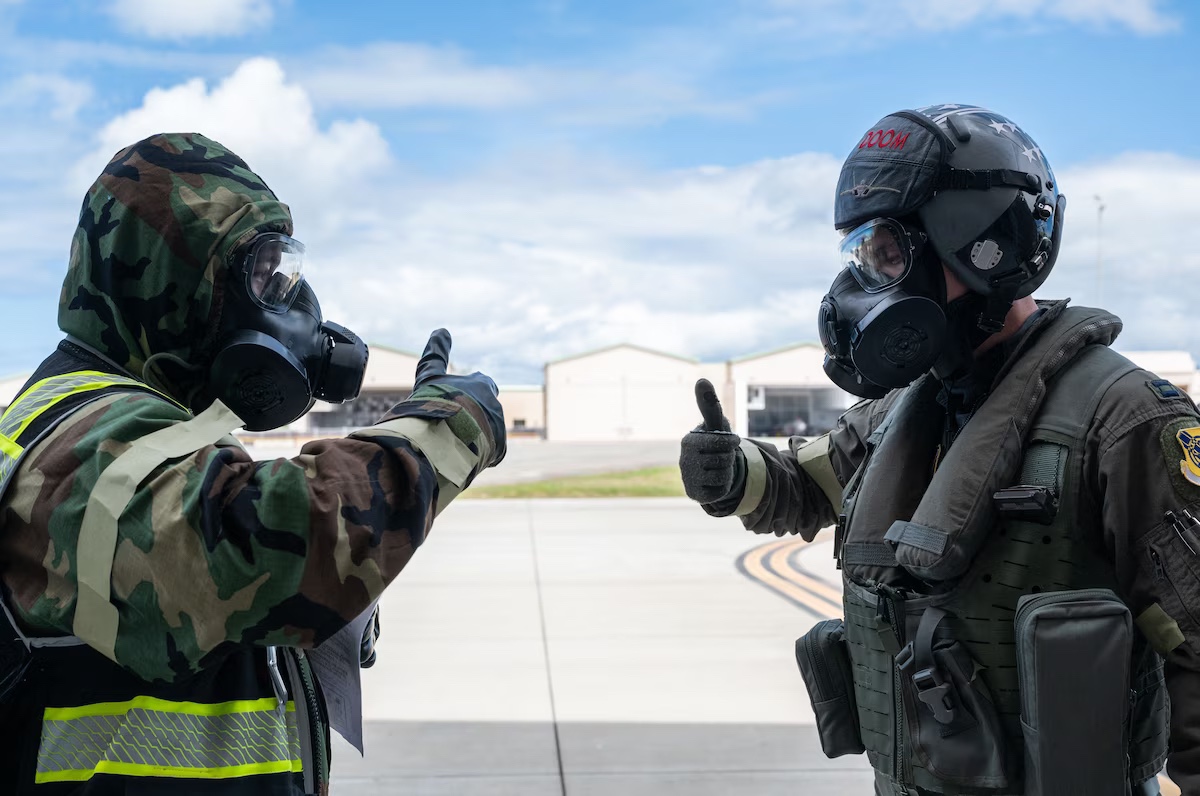
Throughout the F-22 SLR testing procedure, all involved were notating any shortfalls or limiting factors for further examination.
“The ability to work directly with the warfighter to provide relevant and mission enhancing information that allows them to conduct their operations safely while maximizing protection in a chemical environment is a huge win for the work the team has done over the last five years,” said 1st Lt. Gunnar Kral, Air Force CBRN Defense Systems Branch, CBRN aircrew protection lead engineer.
The events at Hickam AFB were capped off with the opportunity to showcase the successful efforts of all involved to the commander of PACAF, highlighting how these practical, risk-based decisions are allowing his wing commanders to Fight Tonight.
“These operationally relevant capabilities give commanders decision superiority to generate combat sorties safely in a chemical environment while maximizing aircrew performance,” Hendrickson said. “This is something that can truly help shape how the warfighter fights over the next decade. The work we’re doing here will save an Airman’s life.”
By TSgt Hailey Haux, Pacific Air Forces Public Affairs, and Col Paul Hendrickson Air Force CBRN Defense System Branch
Some photos by MSgt Mysti Bicoy

